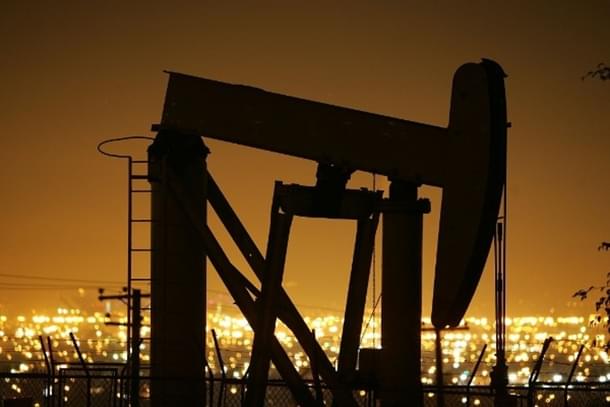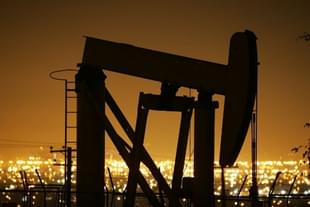Ideas
The Pinch Of Oil: Why Our Economic Recovery May Be Hit By Rising Fuel Costs, And The Way Forward
Abhimanyu Joon
Feb 06, 2022, 10:49 AM | Updated 10:49 AM IST
Save & read from anywhere!
Bookmark stories for easy access on any device or the Swarajya app.


The nation celebrated the new year in a subdued manner owing to the restrictions due to the spread of Omicron — but there are other reasons as well, for the lack of enthusiasm among the citizens.
The primary cause is the rising inflation of food products, which is being fuelled by the high price of petroleum products. Transport is vital for the delivery of goods from producers to consumers through the network of distributors and retailers.
As we step into 2022, the selling price of a litre of petrol and diesel is still hovering around Rs 100 and Rs 90 respectively.
This payment expense made by the rich as well as the poor is going to impact the K-shaped economic recovery.
The visible symptoms are mitigated consumption expenditure by households and the absence of healthy investment sentiment among the businesses. It is known that GDP depends on four parameters, which are government expenditure, the difference of exports done and imports made, consumption and investment done.
With trade balance remaining in the negative category for over a decade due to greater imports than exports, the capital expenditure made by the government alone cannot raise the GDP until there is supplementing private investment and continuously rising demand from the population, for goods and services.
Import of crude oil and its products constitute 27.62 per cent as of November 2021 of the total import basket. Nearly 85 per cent of our domestic need for petroleum products is met with imports.
This has proved as a destabilising factor for the government’s fiscal deficit. As per the data available from the Ministry of Petroleum and Natural Gas, the national import bill for crude oil and its products have resulted in the import bill rising over USD 100 billion per annum.
India plans to bring down its dependence on oil imports by 10 per cent to 67 per cent by 2022 (basis 2014-15 levels), but this dream is far from becoming a reality unless domestic production increases almost many folds from the present value of 32.17 million tonnes a year to match the consumption of 214.17 million tonnes a year.
Surprisingly, despite favourable initiatives such as the Hydrocarbon Exploration & Licensing Policy (HELP), 2016 that has eliminated cess to be paid for oil exploration, reduced rates of royalty along with a single license for conventional and non-conventional hydrocarbon exploration, the declaration of Directorate General of Hydrocarbons, India is shocking as it states that as per provisional figures, in FY 2021, the domestic crude oil production fell by 5 per cent and natural gas production by 10 per cent despite repeated appeals made by the Prime Minister to make the country ‘atmanirbhar’.
There is a direct correlation between the fulfillment of domestic petroleum needs by in-house production and the selling price of products paid by consumers. Greater the local production and processing, lesser will be the reduction in India’s forex reserves for making payments of import.
This will strengthen the rupee as well as reduce the fiscal deficit, which in turn will decrease inflation, culminating in affordable prices across the spectrum. Over and above, our trade deficit would also reduce which would have a favourable impact on national income. But this is easier said than done unless the government of the day is ready to put into action its highly ambitious ethos.
One is surprised to know that the oil and gas sector is outside the ambit of GST, but the equipment required for extraction of oil and gas are levied GST at the rate of 5 per cent and no input tax credit is made available on the products sold.
Moreover, inter-state stock transfers of refined mineral oil products are taxable under GST. The Ministry of Petroleum and Natural Gas has often cited insufficient domestic production of crude oil and natural gas leading to excessive dependence on import, but the fact of the matter is domestic crude sales to refineries is subject to Central Sales Tax, which makes domestic crude 2-3 per cent costlier than import, thereby acting as a deterrent for companies involved in domestic oil and gas exploration.
Also, marketing freedom is unavailable to such companies and nominating specific oil refineries for refining the domestically extracted crude oil, restricts their bargaining power. For example, Indian Oil and Hindustan Petroleum were nominated by the government to buy crude oil from Cairn India’s oil fields in Rajasthan, but as the nominated refiners do not have refining facilities within the state, they are compelled to transport crude oil outside the state, which invites inter-state tax.
Such a policy is counter-productive.
As per the data available on the website of the Ministry of Petroleum and Natural Gas, 99 per cent of India’s production comes from old and ageing fields, which include the 28 Exploration Blocks that were awarded between 1990 -1997 known as Pre-NELP Exploration Blocks.
These blocks are spread across the Gulf of Khambhat, Bombay High, Krishna-Godavari basin and Brahmaputra valley in Assam. Extraction from such fields requires capital intensive technology due to the increasing depth from which crude oil and gas are to be extracted.
Investment in such oil fields becomes more important for the reason that between 1999 and 2012, Government of India signed production sharing contracts for oil and gas under New Exploration and Licensing Policy [NELP] for 254 blocks under NELP regime, of which a total of 148 blocks are active and 106 were relinquished, owing to operational failures.
This indicates the absence of technology for proper mapping of the substratum, to accurately locate the oil and gas reserves.
Since 2017, 105 oil blocks have been awarded after six rounds under Open Acreage & Licensing Policy [OALP] but it is important to note that it takes at least five years before desirable production levels are achieved. This proposition depends upon whether the oil exploration company has successfully located the resource or has it struck a ‘dry’ well.
In the last eight years, close to half of the oil wells dug up in exploration blocks have been identified as dried ones, with no oil available. This has made private and foreign companies sceptical of their participation in India’s oil exploration and this has culminated in decreasing output from domestic fields in the last decade.
The data available from the Directorate General of Hydrocarbons, India highlights an astonishing fact. Since 2003, the level of private investment in domestic oil exploration has dipped to zero and so state-owned ONGC and Oil India have been primarily responsible for 2/3rd of the domestic production.
All these facts point out the need for urgent redressal of two issues, namely development of favourable exploration policy and creation of uniformly suitable taxation regime.
The companies involved in exploration from the ageing field allotted before implementation of NELP are subjected to unsustainable taxation, which includes 20 per cent royalty, 20 per cent cess, 60 per cent government share from Profit Petroleum and 5 per cent sales tax.
As a result, as much as 70 per cent of the operator’s revenues end up flowing to the exchequer, thereby leaving them with a negligible surplus that can be re-invested.
This leads to hampering of the production and leads to below-par extraction than is possible. On the other hand, blocks allotted under NELP are subjected to only 12.5 per cent royalty (HELP regime has different royalty mechanism with various slabs), yet have failed to raise domestic crude oil production in the last two decades.
To successfully safeguard the nation’s energy sovereignty, a multipronged strategy accompanied with unwavering decision making is required. To begin with, the central government should revise the fiscal levies and apply them with uniformity based on the type of basin rather than differentiating the blocks based on Pre-NELP, NELP and HELP contracts.
Secondly, the oil and gas sector should be brought under GST to ensure a common tax rate is applicable on petrol and diesel, leading to the elimination of the price difference across India.
Lastly, the Government of India should encourage the participation of companies such as Baker Hughes, Schlumberger, Halliburton, among others, that have the necessary expertise in the successful application of modern technologies for enhanced recovery from existing and ageing oil fields.
An incentive could be provided by capping the share of government from profit on petroleum to 20 per cent instead of the present value of 60 per cent so that advanced procedures like seismic mapping, artificial intelligence-based remote drilling and plasma pulse, which is a clean fracking alternative requiring no chemicals, could be utilised for enhancing recovery of crude oil by 30-60 per cent.
Every elected government claims to be made by the people and for the people with socio-economic welfare as its prime objective. The time is ripe for the central and state governments to display the spirit of cooperative federalism and let go of their need to extract maximum revenue from domestic exploration, thereby allowing effective utilisation of our oil and gas blocks.
This would not only benefit the people by reducing their expenditure by bringing down the cost of mineral oil products but also improve our economy by decreasing dependence on the OPEC cartel, which compels India to pay the infamous Asian Premium on the value of crude oil purchased, over and above the selling price.





